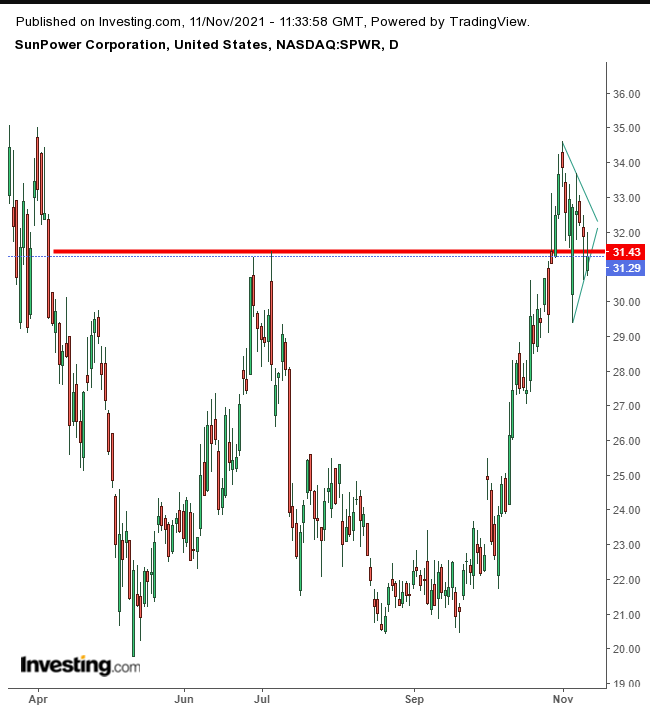One of the hottest pieces of financial markets news right now is the just announced agreement between the US and China to "work together to slow global warming." Though notable for a variety of reasons including that the economic superpowers are two of the world's largest polluters, for companies with a particularly green focus, this could be a potential game changer.
One business that could benefit is San Jose, California-based SunPower (NASDAQ:SPWR). After releasing Q3 results last week that disappointed markets, shares of the solar power generation and energy storage company dropped as much as 10.8%.
However, dip buyers trimmed losses to just 1.3% but the price has been approaching last week's low again, with a four-day straight decline. Will today's news provide support for the price and push it higher? The technicals provide an interesting perspective.

Despite the recent fall, the price may have already found support. The stock has been trading in a sideways direction within a potential pennant pattern.
Tuesday's trade may have formed a hammer (imperfect, with a small upper shadow). Wednesday's activity respected the hammer's bottom, showing support, which agrees with the pennant.
Moreover, the pennant has been developing precisely on the neckline of a large double bottom since April. If the pennant completes with an upside breakout, it will confirm the larger bullish pattern.
From a risk-reward perspective, it's possibly an ideal trade, considering the price is the very bottom of what may prove to be a bullish pennant.
Trading Strategies
Conservative traders should wait for the pennant to complete, especially considering that the price is back below the double bottom's neckline. After the topside breakout, they should wait for the price to retest the pennant's support.
Moderate traders would wait for the same breakout and a return move for a closer entry, if not for confirmation.
Aggressive traders could enter a contrarian, long position (given the stock's current descent), considering the ideal risk-reward ratio. However, this is a risky trade, and a trading plan is key. Here's an example:
Trade Sample
- Entry: $30
- Stop-Loss: $29
- Risk: $1
- Target: $37
- Reward: $7
- Risk:Reward Ratio: 1:7
